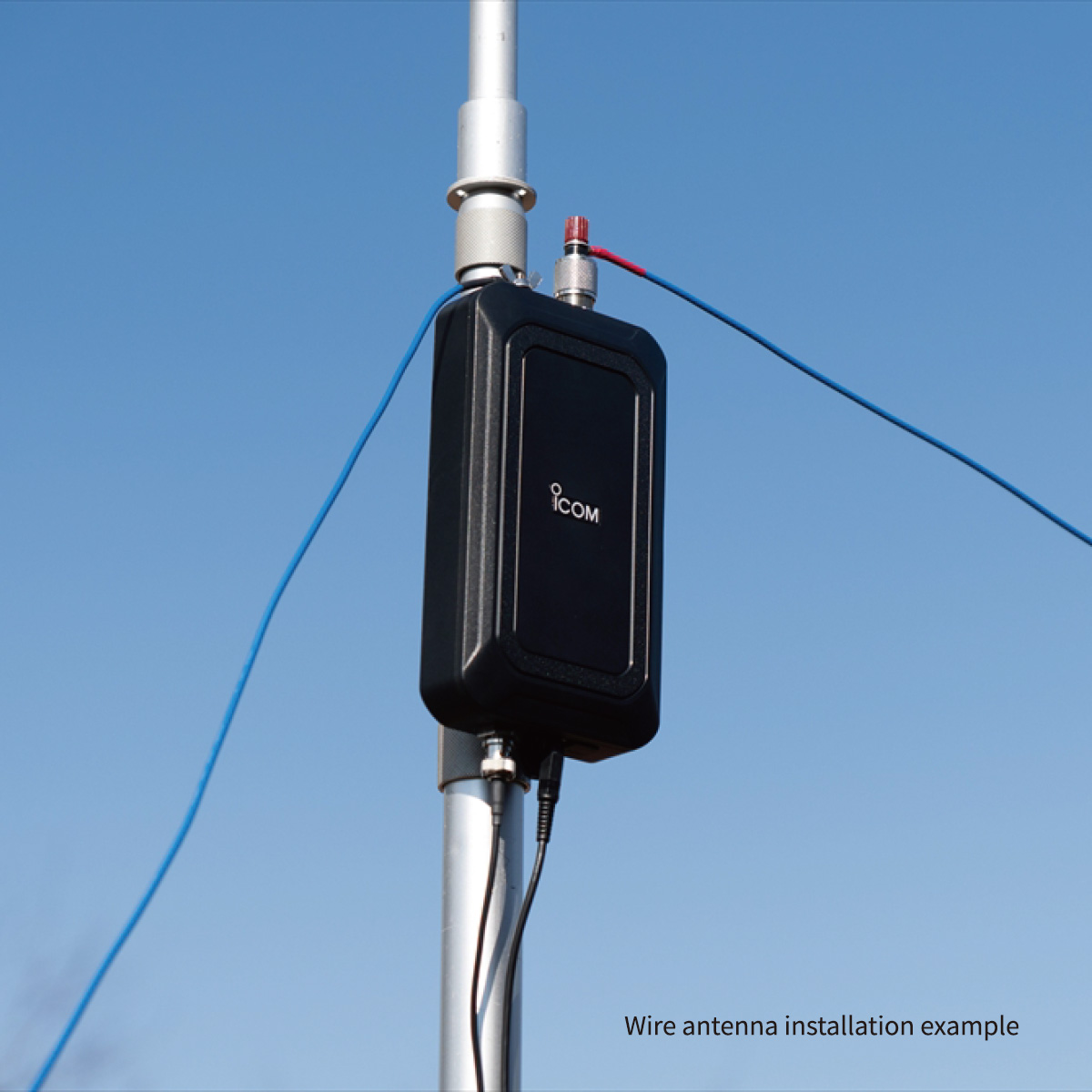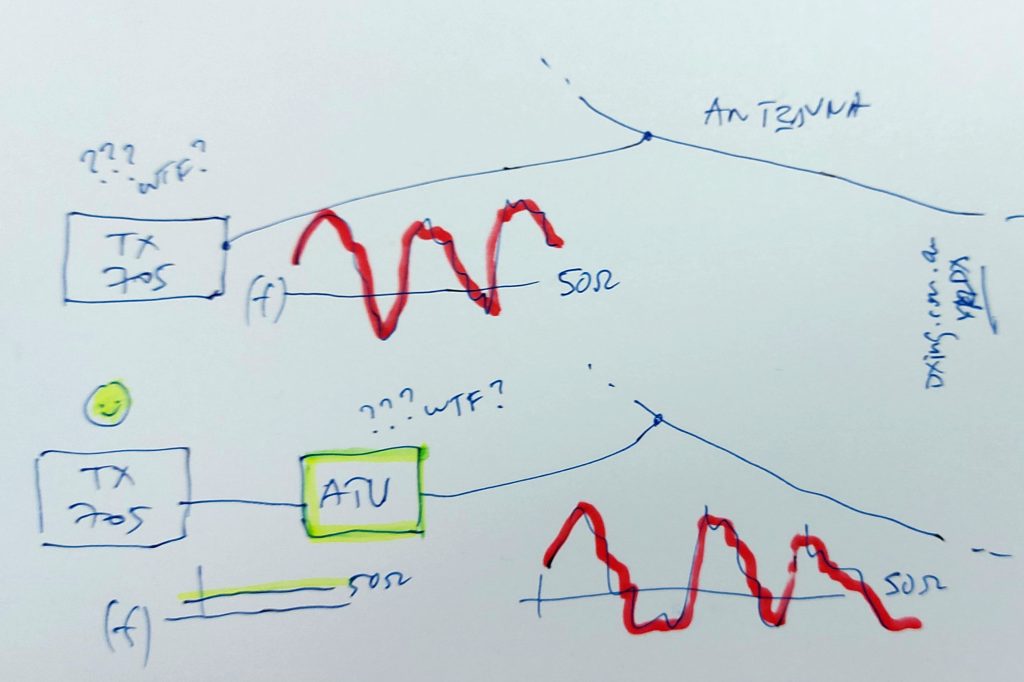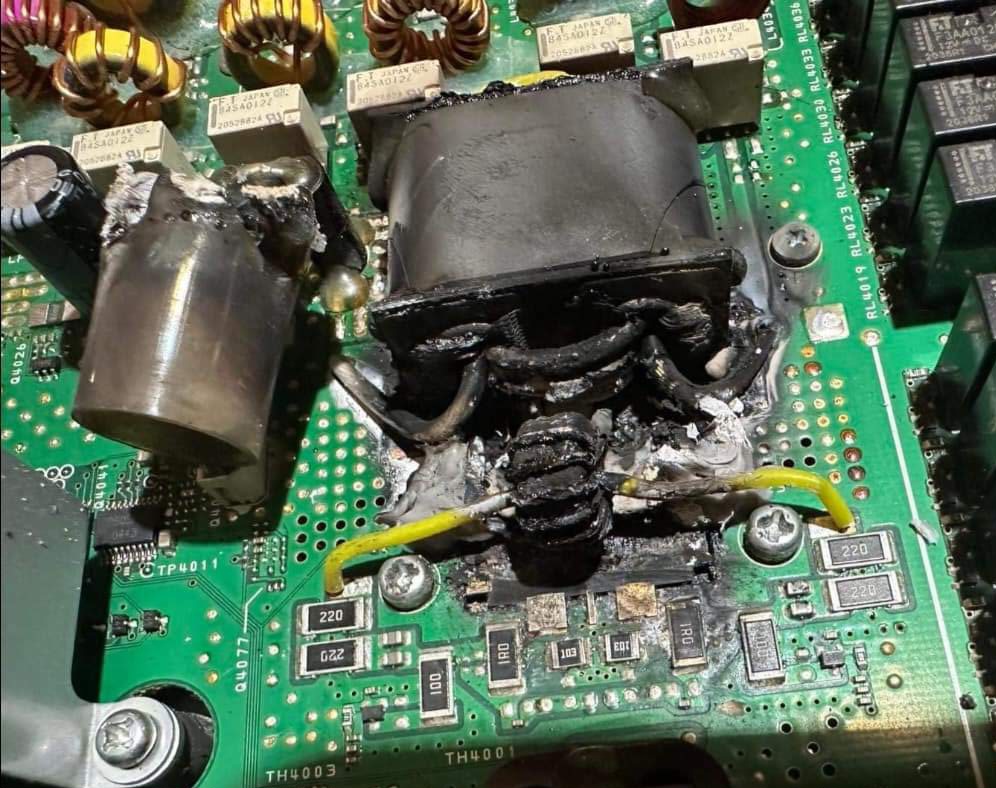
Hi Nick
I’m new to the hobby and looking to buy an Icom-705. I have a question:
Do I need an antenna tuner for this radio? I intend to use an end fed antenna but also have a Yaesu ATAS 25 antenna that I was using with a Yaesu 818ND.
M. VK2—
Dear M,
The short answer is yes. And the long answer is yes as well.
Here is a quick and explanation (coming from someone who is not really qualified to answer deeply technical questions!):
The sketch below shows two scenarios. The first one shows IC705’s transmitter connected directly to a random wire antenna.
Second: an antenna tuner connected in between.

1. Modern transmitters are designed to provide maximum output only into a perfect (non inductive) 50 Ohms load. Unfortunately, a random piece of wire is rarely even close to 50 Ohms at a desired frequency. No matter where you tune, your IC-705 is panicking. “Stop transmitting, the power I’m pushing out is coming back at me!” Not happy. Being a smart transmitter, and fearing for it’s dear life, it reduces power to the bare minimum – or, if the mismatch is greater than it can withstand, it shuts itself down completely.
2. Insert an antenna tuner – and for your IC-705 things are looking much better. Essentially, the antenna tuner is a black box with just one purpose: to lie to the transmitter, saying that what it ‘sees’ is a perfect 50 Ohm load, regardless of the frequency.
ATU is a good liar, and your radio is happy to provide full output almost everywhere you transmit.
However, the ATU has to pay the price for the mismatch it sees (there is no such thing as a free lunch). This is why the power rating of an ATU is as important as it’s frequency range and speed.
This scenario is still better than the first one; at least, you are transmitting 10 Watts which is better than nothing, but far away from optimal.
What would really get you going (making two way contacts) is this setup:

IC-705, ATU and a resonant antenna for the band you intend to operate on. For example, if instead of a random wire you use 10m of wire extended along a fishing rod with two 10m wires attached at the antenna tuner’s counterpoise point, then such an antenna will resonate nicely on 40m and 15m band, looking very close to the ideal 50 Ohm load. Here, the role of the ATU is just to fine tune the match – and everyone is happy.
In your case: I am not familiar with ATAS25 antenna but from what I can see online, it is a short whip with manually tuned bottom loading coil. The efficiency of a short whip is not that great. The end-fed wire would be my choice in permanent setup. For portable work, a light weight 40-10m trap vertical or trap dipole would be the way to go.
Obviously, for an IC-705 owner, it makes perfect sense to invest in a matching AH-705 antenna tuner.
This baby is designed for portable operation (can be powered by two rechargeable batteries), super lightweight (under half kg) and comes with a short coaxial cable as well as control cable. A side note: a counterpoise wire is absolutely a must, for any antenna tuner, regardless of maker/model.
Here is a great little video featuring a young Japanese lady, Masaco JH1CBX, demonstrating the capabilities of the AH-705 antenna tuner.
The purpose of the video is to demonstrate that AH-705 can be tuned down to 160m with an antenna consisting of just 7m of wire. It also shows the speed of ATU on all other bands. Of course, running 10 watts in 7m of wire would provide hardly any communication coverage on 160/80m but such a setup would work reasonably well on 20m and higher.









